Farr 40: Winning the Grand Prix One Design Race
Published on October 29th, 2015
Almost since the first Farr 40 was launched in 1997, the class has dominated the unique lane of grand prix, one design racing. After hosting its 18th official World Championship this summer in California, the passion and performance within the class remains strong. Scuttlebutt editor Craig Leweck checks in with Farr 40 Class Manager Geoff Stagg for an update:
Let’s start with some background.
There are 152 boats which are spread amongst 19 countries. When you think about this number it is absolutely amazing. Many competitors have tried to come up with a replacement boat but to no avail. A used boat ready to race is between $150,000 and $250,000.00, but for a bit more there is a hull sitting in the mold at US Watercraft that can be finished within 6 months.
How many are being actively sailed?
There are 40 boats in one design trim class racing and at least 30 in handicap racing under IRC and ORCi in Europe and Australia. Compared to the glory days when we had up to 39 on a start line, this is a good size drop off. However, we are still having 18-20 boats at our World Championships and 14-16 at circuit events which is still amazing. I did the One Ton Cup circuit for many years, finally winning it in 1991, and we never got those numbers on a start line.
Where are the hubs of one design class activity?
Australia with 12 active boats, Great Lakes with 8 active boats, West Coast with 12 active boats.
Lot of wealthy owners and contentious tacticians compete in the class. How do you keep the peace?
Legitimate owners driving their own boats is the key. The class is run by the F40 Executive committee and managed by Stagg Yachts. Keeping control of the One Design nature of the boats is the other principal objective followed by putting on great events in fantastic locations. A F40 class event is very special with a definite feeling of family amongst the owners and crews which makes it very special. Controlling costs is very important too.
Any secrets behind the class longevity?
It is a good design but the key is a group of owners who are hands on with their class and care deeply about it. There is no other class in the 40 foot range which offers such fantastic racing with identical boats, cost control measures (re, sail and pro crew limitations), events in great locations at prestigious Yacht Clubs and venues.
After 18 years, the boat still looks remarkably young and is still a weapon on the water, particularly upwind. With its masthead symmetrical spinnakers the boat is challenging and rewarding to sail well downwind which presents passing opportunities by playing any small wind shifts without losing ground. The One design levels of the boats are without equal. No other One Design Class goes through the inspection and measurement procedures of the F40 class.
For every World Championship, the boats are weighed, keels templated, keel depth checked, rudders templated, all sails measured, rigging checked, safety equipment checked, BHS checked and life lines sealed. Keels are weighed off the boat for compliance with the 17 kg class tolerance max – min. For the 2015 World Championship, rigs were measured, weighed, cg checked against the original spar builders measurement compliance certificate. Rigging diameters and spreader bar materials were checked.
Additionally, we are so incredibly lucky to have a fantastic title sponsor in Rolex who have played such a huge part in the success of the class for the past 15 years.
Not everybody plays by the rules. What has been learned from those instances?
We went through a very difficult period in 2013 after finding that a boat had altered its bulb weight. What the F40 owners expect is that all boats are identical. Easy to say, very tough to do, but what we have always done is address any problems head on and not sweep them under the carpet or grandfather boats.
After much research and boat weighing, we introduced a new keel weight rule that tightened the rule tolerance to 17 kg and required all boats to have their keels weighed off the boat by class measurer and comply to the new rule. As we are an ISAF class, this requires a 75% majority vote of paid up owners of the class to pass. It passed and this has resulted in the closest racing at a World championship the class has seen in its 18 year history. Measurement is an ongoing process to maintain the class One Design integrity.
The class has focused on the USA west coast for the last two years. How did that get started and how well did it work?
Several high profile owners bought Farr 40s in the early days of the Class and campaigned them worldwide as well as in local events and World Championships over the years. There have now been four World Championships sailed out west – three in San Francisco and one in Long Beach.
As some of those boats were sold on the local brokerage market, the current west coast fleet formed with mostly Corinthian owners and crews and has been a great model for other locations. The west coast fleet was quite involved in how the Corinthian trophy is competed for and it has been really good to see how those sailors have improved their skills and performance over the last two years while the international fleet was there. They have a very bright future.
But now the 2016 Worlds will be moving to Australia.
The 2016 Rolex F40 Worlds will be hosted by the Royal Sydney Yacht Squadron February 16-19. That will be followed by 3 events in the Adriatic: May 18-21 in Ancona Italy, July 6-9 in Šibenik, Croatia and September 21-24 in Zadar, Croatia. We have not been in Europe for 4 years and the response from European boat owners of which we have 50 boats has been very encouraging.
The US owners have scheduled a full circuit of events based on the West Coast and Great Lakes which the class will continue to support. The 2016 North American Championships will be hosted by the Chicago Yacht Club.
Editor note: The Australian Farr 40 fleet have organized a racing schedule to give the local fleet four months to prepare for the 2016 world title Sydney will host next February. Three open regattas in October (24-25), November (7-8) and December (12-13) precede the Farr 40 NSW State Title (January 23-24, 2016) and Farr 40 National Championships: John Calvert-Jones Trophy (January 29-31). The competition then moves from Middle Harbour Yacht Club to the Royal Sydney Yacht Squadron at Kirribilli for the Australian International, February 11-13, and finally the big one, the Rolex Farr 40 World Championship, February 16-19, 2016.


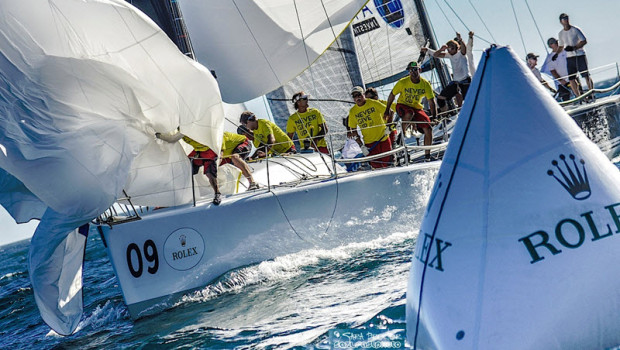


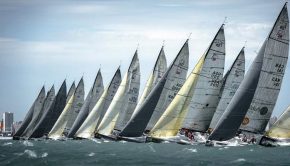
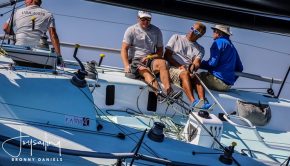
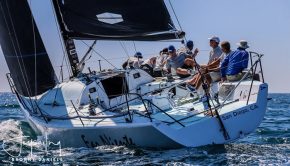
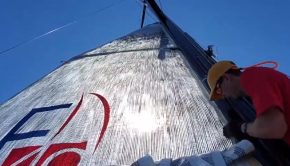
 We’ll keep your information safe.
We’ll keep your information safe.